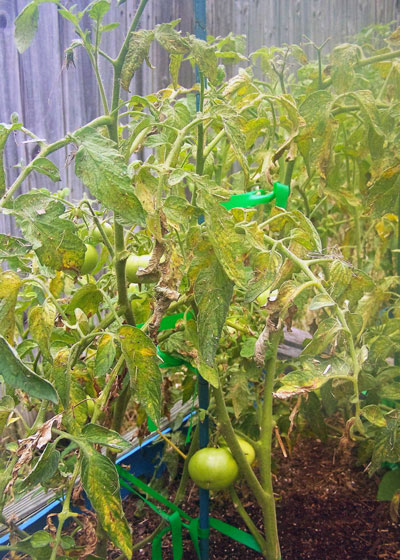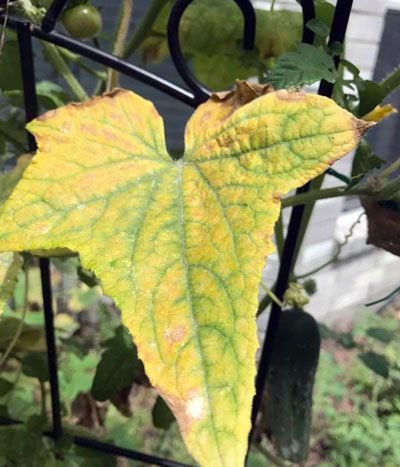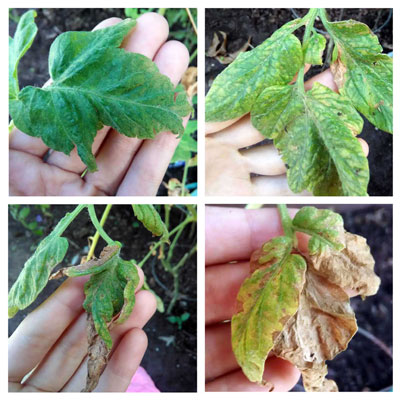Question of the Week Number 3: June 8, 2017

Photo: Spider mites have quite possibly ruined this tomato plant and the gardener never realized what hit it.

Photo: Cucumber leaf shows telltale symptoms of spider mite attack. See details below.
“Neil, what is wrong with my tomato and cucumber plants? Their leaves are turning yellow, then dried and crisp.”
Spider mites aren’t really insects. Where insects have six legs, spider mites (like ticks and spiders) have eight. But they get lumped in with insects in terms of controls.
Host plants…
No pests in our landscapes and gardens bother more types of plants than spider mites. Just for beginners, you’ll commonly see them on beans, tomatoes, cucumbers, squash, marigolds, ageratum, pansies, verbenas, junipers, arborvitae, cypress, and a whole host of houseplants.
Progression of Spider Mite Damage on Tomato Foliage
(Photos posted by a Facebook friend T. McC. to my page a few days ago)

Upper left: Leaf is just beginning to show yellow stippling. Upper right: Yellowed mottling becomes more evident within just a couple of days. Mites can still be controlled at this point. Lower left: Leaves are beginning to wither and dry. Point of no return is nearing. Lower right: Leaves are almost entirely crisp. It is doubtful that this plant can be saved. Click image for larger view.
Symptoms…
• Damage usually starts at lower parts of the plant and flushes upward.
• Lower leaves develop tan or yellowed mottling, often in small speckles initially.
• Leaves quickly turn solid yellow, then dried, brittle and crisp.
• Entire plant may be impacted and very fine webs may become visible in axils of leaves. By time these symptoms become visible to the naked eye it will probably be too late to save the plant.
Early identification…
When you suspect a spider mite outbreak, take a leaf that appears to be infested and thump it over a sheet of white paper. Watch closely for very tiny paprika-colored speckles to start moving about. They are so small that you would have a difficult time seeing them on the plant, which explains looking for them on the paper. You could easily put 20 of them abreast on the head of the pin.

Photo: Once you’ve learned what spider mite damage looks like on one plant, you’ll soon learn to recognize it on most other plants as well. Click image for larger view.
Controls…
Horticultural oil sprays may help limit the population of spider mites, as will spraying with a hard stream of water.
However, the best control will probably come from applications of labeled insecticides. We no longer have specific mite control products such as kelthane, so you’ll need to check labels on general-purpose products and follow their directions carefully. Check the plants again in a day or two to see if the numbers of active mites has decreased significantly. Repeat weekly until you are satisfied with the results.
